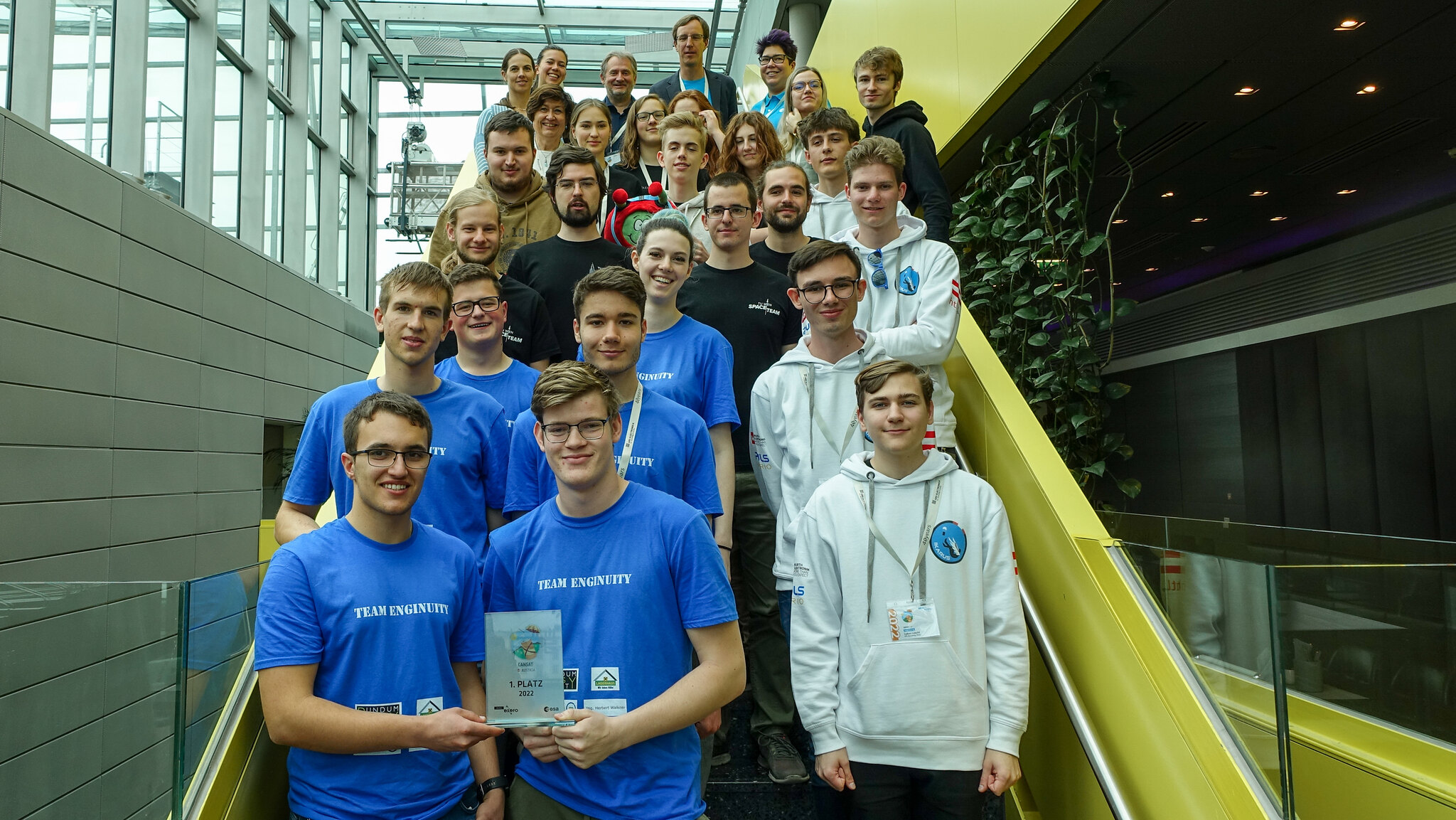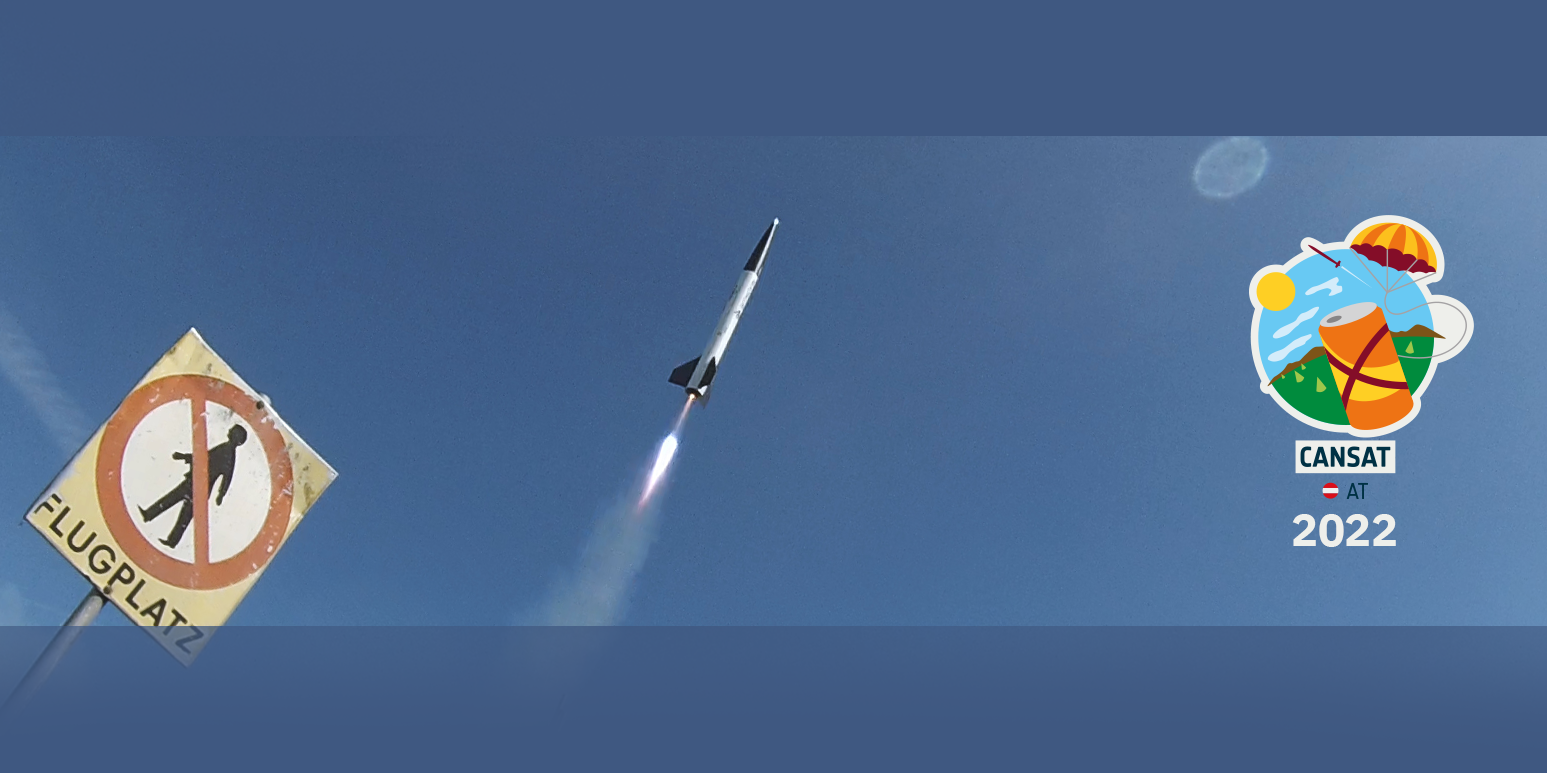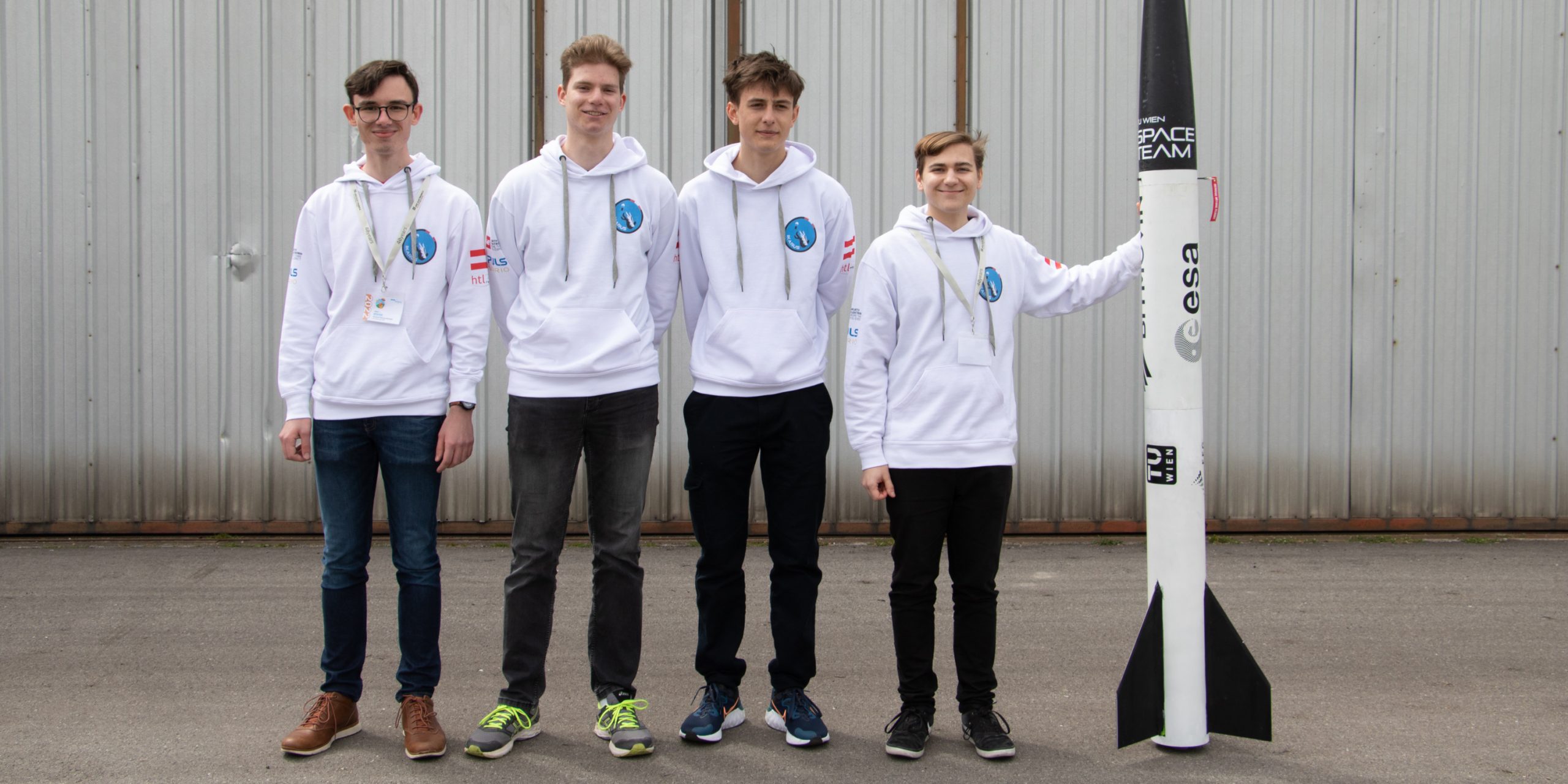The CanSat Austria Final 2022 was very exciting right to the end. Read all about it here.
After hundreds of hours of tinkering, learning, assembling, calculating, adapting, calibrating, public relations work, “troubleshooting”, and hoping and fearing, the time had finally come on 21 April, 2022, at Suben Airport ! The CanSats of the teams Ikarus , engINUITY and WerndlExplorer were successfully transported hundreds of meters into the air by the rocket of the TU Wien Space Team !
This year the teams really didn’t make it easy for the jury. Team Ikarus from HTL Rennweg (Vienna) shone through their flawless execution of the missions, Team WerndlExplorer from Gymnasium Werndlpark (Upper Austria) through their creative, enthusiastic approach, and Team engINUITY from the HTL Salzburg through their unwavering determination despite some problems and adversity.
The teams and their missions
Each team’s primary mission consisted of the task of measuring air pressure and temperature to create an altitude profile.
Secondary missions (self-chosen):
Team Ikarus
Team Ikarus’ CanSat was designed as a probe to explore extrasolar planets. The purpose was to obtain data on the composition of the atmosphere, which has a major impact on human living conditions, and measure humidity, CO2 levels, and ground temperature. Furthermore, in addition to the scientifically usable data, the mission itself was documented in the best possible way. During construction, meticulous care was taken to design individual components in such a way that they would function as redundantly as possible and that a potential failure could be compensated for in the best possible way.
Team engINUITY
The secondary mission of Team engINUITY involved the construction of an autonomously controlled lander, as can already be guessed from the team’s name, a reference to their inspiration “INGINUITY” (Autonomous Drone on Mars). They built a CanSat equipped with rotors that would deploy on ejection and stabilize itself without a parachute. Subsequently, the CanSat would perform an autonomous target landing. After landing, the CanSat should take off again and perform a reconnaissance mission.
Team WerndlExplorer
Team WerndlExplorer was the only non-HTL team to compete. The goal of their secondary mission was to measure distances by comparing radio and sound signals and to use them to draw conclusions about a position. The used “lightning and thunder” concept should replace the GPS navigation system, which would not be available on an extrasolar planet or moon.
Conclusion
Each of the teams accomplished some aspects of the missions with flying colors and struggled with other aspects.
The winning team: engINUITY
After a competition that remained exciting until the last minute, Team engINUITY finally came out on top. Despite all the difficulties, team engINUITY was able to convince the jury with its flexibility, willpower, perseverance and, above all, the complexity of their secondary mission. In particular, the team’s ability to act under pressure and overcome difficulties impressed the jury, which consisted of representatives from various companies and institutions (bmk (The Federal Ministry of the Republic of Austria), Peak Technology, TU Wien Space Team, Vienna Museum of Science and Technology and Ars Electronica Center).
Team engINUITY will represent Austria at the European CanSat competition of ESA in Bologna (Italy) at the end of June. We wish them all the best!

That was CanSat 2021/22. Four teams from three different states entered the competition – three teams made it to the finals!
Curious about the teams’ approaches, facts and figures, and lessons learned?
Click here for the teams’ final reports (in German):
Final report engINUITY
Final report Ikarus
Final report WerndlExplorer
CanSat 2022 – Video:
Credits: Ars Electronica / Thomas Schwarz





